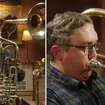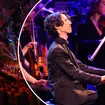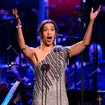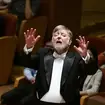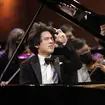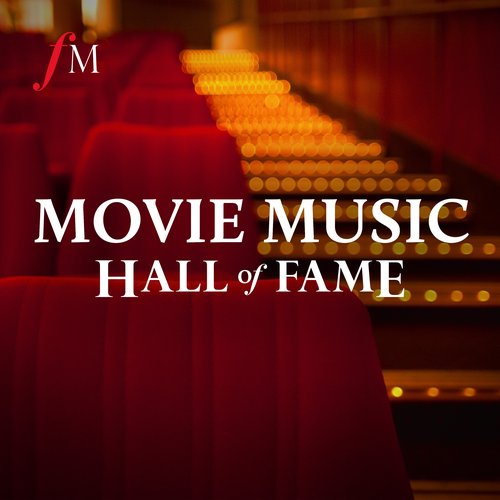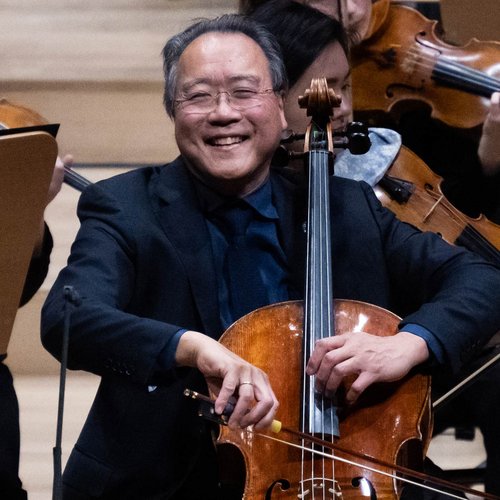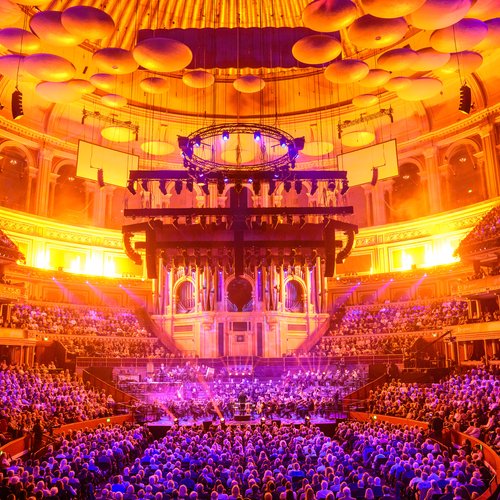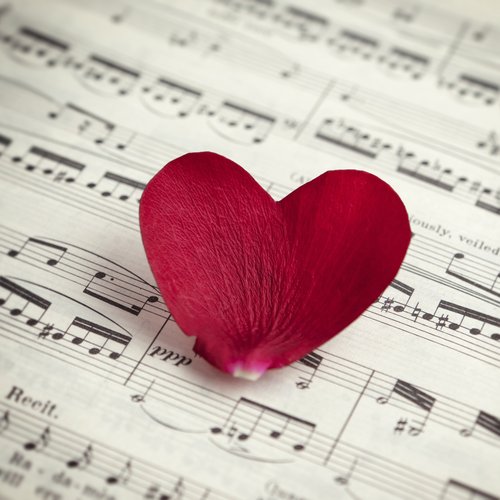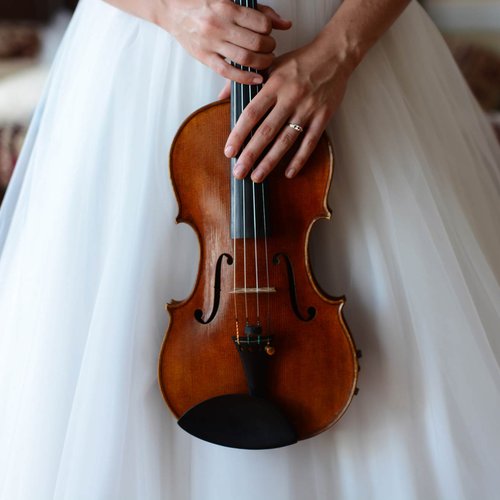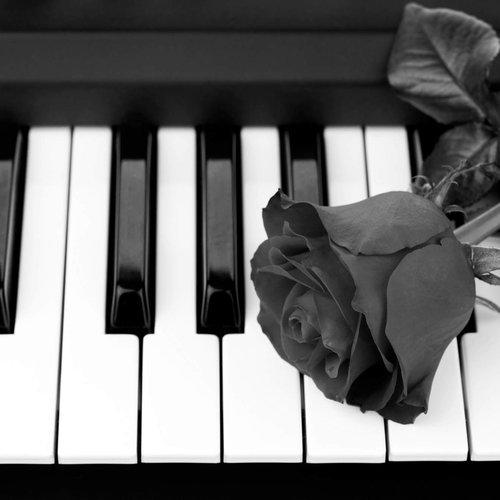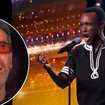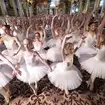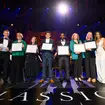Musical terms: A glossary of useful terminology
6 September 2021, 15:55 | Updated: 21 June 2022, 11:23

18 most beautiful and useful classical music terms
Struggle to remember the entire dictionary of music terms? From adagio to waltz, here is a comprehensive guide to Italian musical terms and other terminology.
Whether a direction to play glissando or an indication that Pavarotti is in fact about to sing an aria, not the overture, music terms can sound as beautiful and playful as the compositions they describe.
They’ll also help you gain a fuller understanding of the history of classical music, and exactly how composers wanted their pieces to be played.
Here’s a look at some of the most useful terminology you’ll find in music.
Read more: 30 of the greatest classical music composers of all time
A
Accelerando (Italian: 'getting faster')
Adagio (Italian: 'slow'). Meaning the music should be played slowly. Barber's 'Adagio' is a fantastic example of this.
Allegro (Italian: 'lively'). Meaning the music should be played cheerfully. Upbeat and brisk. Try Rossini's William Tell overture for size.
Andante (Italian: 'walking'). Meaning the music should be played at a walking pace. Not too fast or slow.
Aria (Italian: 'air'). An aria is a song, generally used to describe set-piece songs in Opera.
Atonal Music in which no key can be established. The technique is heard in a lot of 20th Century music. Composers from the Second Viennese School used atonality as a basis for much of their work.
Read more: Here’s a genius written representation of musical terms
B
Ballad. From the vulgar Latin 'ballare', meaning to dance. A work in dance form imitative of a folk song, with a narrative structure.
Bar. A vertical line through the stave, to mark the music into sections, each with a set amount of beats within.
Barcarolle. A boating song, generally describing the songs sung by gondoliers in Venice. Chopin, Mendelssohn, Fauré and Offenbach all wrote works imitating the form.
Baritone. Male singing voice in the middle range. Gerald Finley is a world class example of a baritone.
Baroque. A period in art and music from around 1600-1750. Composers include Monteverdi, Purcell, Rameau, Bach, Vivaldi and Handel.
Basso Continuo (Italian: 'continuous bass'). A form of bass line used in music from the Baroque period. It is usually notated with numbers indicating what chords can be used, so the continuo player can embellish the lines. Bach's Brandenburg Concertos are a fine example of this.
Berceuse. A lullaby. Generally slow and undulating, Chopin's famous Berceuse is the most well known example of the form.
Bolero. A Spanish dance. The most famous example is Ravel's Boléro.
C
Cadence. Two chords at the end of a piece which provide a type of 'punctuation' at the end of a musical phrase. Cadences can either suggest the sentence isn't over, or provide a type of musical 'full-stop'.
Cantata. A choral work that uses solo voices with an instrumental (usually orchestral) accompaniment. A cantata is generally a choral work of some length that also uses solo voices, usually with instrumental accompaniment. The texts used may be sacred or secular. Some cantatas use solo voices without chorus or choir. Listen to Bach's Cantata No. 140 (Wachet Auf) for a beautiful example.
Capriccio. (Italian: 'caprice'). A lively piece of music, usually free in its form and short. Tchaikovsky's Capriccio Italien is certainly in high spirits.
Chanson. (French: 'song'). A French song, from the middle ages to the 20th century.
Chorale. A Lutheran hymn. Generally the music moves in block chords. The most famous Chorales of all were written by Bach.
Chord. The sounding of two or more notes at the same time.
Chromatic. Notes which do not belong to the diatonic scale. For example, in the scale of C major (the white notes on the piano), they black keys (sharps and flats) are the chromatic notes. Rimsky Korsakov's Flight of the Bumblebee is a particularly exciting example of a work built around the chromatic scale.
Clef. Several symbols drawn at the end of a stave, indicating the pitch of the notes written on that stave.
Coda (Italian: 'tail'). The tail end of a piece of music. Usually a section which indicates the end of the piece or section is approaching.
Coloratura (Italian: 'colouring'). A type of decoration, usually in singing that is ornate and richly ornamented. Dame Joan Sutherland was one of the greatest coloratura sopranos of all time.
Concerto. A piece of instrumental music for soloist contrasted by an ensemble (either a small group of musicians or a full orchestra). Rachmaninov's epic Piano Concerto No. 2 remains one of the most popular works in the genre.
Countertenor. The vocal range of a male alto. Close in range to a female soprano. Iestyn Davies explains here.
Crescendo (Italian: 'growing') A dynamic instruction meaning to gradually play louder.

Rimsky-Korsakov's Flight of the Bumblebee on a toy piano, by Julian Clef
D
Da Capo (Italian: 'from the beginning'). Usually abbreviated to 'D.C.' at the end of a section of a piece, meaning go back to the beginning and play either to the end (Da capo al fine) or to the sign, which looks like a stylised "S" (Da capo al segno).
Diminuendo (Italian: Literally 'diminishing'). A dynamic instruction meaning to gradually play quieter.
Dynamics. Levels of sound in music. The spectrum of soft to loud.
E
Elegy. A piece of music in the form of a lament.
Ensemble. Description of: whether instrumentalists are playing together; a group of performers.
Espressivo (Italian: 'expressive'). An instruction meaning that a passage should be played with expression, or expressively.
Etude (French: 'study'). An instrumental composition intended to improve or tax certain aspects of technique. Some of the hardest instrumental works are large scale etudes by composers such as Chopin and Liszt.
F
Fagotto. The Italian word for Bassoon.
Flat. Indicated by a stylised ♭ sign, shows that the note before which it is place should be lowered by a semitone. Flat can also mean that a note is out of tune, sounding lower than it should in this case.
Forte (Italian: 'strong'). A dynamic instruction meaning the music should be played loudly. The instruction appears as either: 'f' loud; 'ff' fortissimo, meaning very loud; or 'fff' very loud. The practice has expanded to allow for any number of 'f's, depending on how loud a composer wants something to be played. Here are some examples of when 'fff' really doesn't describe it...
Fugue. A form in which the composition is contrapuntal. A theme introduces the piece, which is then repeat at different pitches throughout the composition, set in counterpoint to other musical lines within the texture. The Fugue has proven a fascinating medium, even penetrating the world of pop music and Lady Gaga...
G
Gigue. A lively dance form from the Baroque period, from the English Jig.
Giocoso (Italian: 'playful', 'cheerful'). Meaning the piece should be played in a cheerful or playful way.
Glissando. From the French 'glisser', meaning to slide. An instruction to slide between a group of notes. On the piano, for example, the performer runs a finger down or up the keyboard.
H
Harmony. The sounding of two or more notes at the same time. A composer may be said to have a 'harmonic language', similar in meaning to saying someone has a particular accent.
Humoresque. A piece of music with a humorous feel. Notable compositions using the name have been written by: Schumann, Dvořák and Rachmaninov.
Hymn. A song of religious worship. The protestant tradition of hymn singing comes from the chorales of Martin Luther. Here is Classic FM's collection of 50 classic hymns.
I
Impressionism. A term describing movements in art and music. Generally French, the impressionist art and music from the late 19th / early 20th Century is characterised by a sense of veiled, blurred images and a palette of rich colour. Both Debussy and Ravel resented their music being described thus, as they felt it suggested their music had little formal and structural value.
Intonation. The accuracy or lack of pitch in instrumental playing and singing. For example, 'intonation is off here', meaning the tuning is not exact.
J
Jig. A lively English dance, usually placed at the end of a Baroque suite.
K
Key. A musical key is the relation of different chords to each other. The 'tonic' is the subjective sense of 'home', from which musical compositions deviate from, and arrive back to. Relations of different keys to each other give the impression of tension, development and resolution. A 'key signature' is an instruction at the beginning of written music, indicating what the 'home key' of the work is.

Chineke! Orchestra plays Florence Price Symphony No. 1 in E minor
L
Largo (Italian: 'broad', 'wide', 'slow'). An instruction meaning the music is usually slow in speed, or broad in tempo.
Legato (Italian: 'joined'). An instruction indicating that a sequence of notes should be played smoothly, or joined up, as opposed to disconnected.
Leggiero (Italian: 'lightly'). An instruction meaning to play lightly and without force.
(col) Legno (Italian: 'wood'). An instruction for string players, usually written as 'col legno' (with the wood). This indicates that the string player should use the wooden side of the bow to hit the strings with.
Leitmotif. A short, recurring musical phrase, usually associated with a character, idea, event or object. This is the musical equivalent of branding. Wagner used the technique extensively in his music dramas.
Lento (Italian: 'slow'). A tempo instruction meaning the music is slow.
Libretto (Italian: 'little book'). The text of an opera or vocal work, which was traditionally printed in a small book.
Lied(er) (German: 'song'). A form of song in the German tradition, exemplified by: Schubert, Schumann, Brahms, Wolff, Mahler and Richard Strauss.
M
Madrigal. A vocal composition originating in 14th Century Italy. Madrigals are usually of a secular nature, and became very popular in the Renaissance and early Baroque periods.
Major. A scale which corresponds on the piano to all the white notes, C to C. A C major triad chord consists of the notes: C, E, and G. Generally, major keys sound 'happy' while minor keys sound 'sad'.
Malagueña. A Spanish gypsy dance from the region of Málaga. Composer Ernesto Lecuona is known for his piece of the same name, and Ravel used the form in his Rapsodie Espagnole.
Mazurka. A traditional Polish dance. Many composers, including Chopin and Szymanowski have written works using the form.
Mezzo (Italian: 'half'). The term can be used in a number of contexts. Mezzo-forte / mezzo-piano are dynamic instructions meaning 'half-loud' and 'half-soft' respectively. A mezzo-soprano is a female voice range that is lower than a soprano.
Minuet. A popular French dance from the mid-17th Century to the end of the 18th Century.
N
Natural. A note which is neither sharp nor flat.
Neoclassical. Neoclassicism is a style of music used by composers in the 20th Century which incorporate Classical and Baroque structures within their works. Stravinsky, Ravel and Hindemith are all composers who experimented with the style.
Nocturne. A piece of music of a nocturnal mood. Irish composer John Field invented the form in the early 19th Century, which led to its popularisation by Chopin, who wrote 21 nocturnes.
O
Obbligato (Italian: 'obligatory'). An instrumental part which is essential in a piece of music. Popular in the baroque period.
Octave (Latin: 'octavus', 'eigth'). The interval of an eight, eg: from the notes C to C or D to D.
Octet. A piece of music written for 8 performers.
Ondes Martenot (French: 'Martenot waves'). An electronic instrument which produces sound using a keyboard which controls oscillating frequencies. Produced by Maruice Martenot in 1928, the most famous example of its use is in Messiaen's bombastic Turangalîla-Symphonie.
Opus (Latin: 'work') A term is generally used in the listing of a composer's works by opus numbers, usually abbreviated to Op. Since the Latin plural opera would lead to unnecessary confusion it is best avoided, although the alternative opuses remains an unsatisfactory substitute. Opus numbers are not always a guide to the date of composition or even to the date of publication.
Oratorio (Italian: 'pulpit'). A large scale work for orchestra and voices, usually sacred in nature. Oratorios are narrative in the same way as opera, but are performed without staging, costume, action or scenery.
Ostinato (Italian: 'obstinate') A repeated musical phrase or rhythm.
Overture. An introductory movement to an opera or substantial work. In opera, the overture usually contains examples of the major musical themes that will appear throughout the work – a type of trailer for what is to come.

Incredible moment opera chorus bursts into a Verdi melody on Italian metro
P
Partita. A musical suite, usually for solo instrument or small ensemble.
Passacaglia. A baroque dance form in which a short melodic phrase, usually in the bass, form the basis of the work.
Pentatonic. A five-note scale consisting of the black notes on the keyboard. Used in folk music from many countries, it is readily associated with an 'oriental' sound.
Pianoforte (Italian: 'soft loud'). Colloquially known as the 'piano'. A keyboard instrument developed int he 18th Century. The piano evolved from the harpsichord, in that the piano creates sound by hammers hitting strings, rather than the strings being plucked. The term 'pianoforte' is a mix of two Italian words, 'piano' (soft) and 'forte' (loud), meaning depending on how much force is applied to the keys, the instrument's dynamic range can be anywhere from very soft to very loud.
Pitch. The frequency of the vibration of sound. Pitch is measured in hertz, and is generally organised in a system known as 'equal temperament', a system of tuning in which different notes have a standardised pitch ratio.
Pizzicato (Italian: 'plucked') A direction to string instrument performers to pluck the strings, rather than using the bow to create sound.
Più (Italian: 'more'). A term that can preface an instruction to mean 'more of'. 'Più vivo', meaning 'more lively', or 'Più lento', more slow.
Poco a poco (Italian: 'little by little'). An term that can preface and instruction meaning to follow it 'little by little'. For example, 'poco a poco crescendo', meaning, getting louder gradually, little by little.
Presto (Italian: 'quick') An instruction that a movement, section therein, or work is fast in tempo.
Q
Quarter-tone A division of pitches, smaller than a semitone, which is half a tone. Found generally in some music from the 20th Century.
Quartet. A group of four players, or a composition for four players.
R
Rallentando (Italian: 'becoming slower'). Often abbreviated as 'rall...', is an instruction to gradually play slower.
Recitative. In vocal works, recitative is a moment where a solo voice sings in relatively free rhythm. Usually preceding an 'aria' (the main song), recitative is usually used to illustrate plot and narrative in opera.
Requiem Mass. A Catholic Mass of the dead. Notable examples include Mozart's major last work, and others by Brahms, Berlioz, Verdi and Faure.
Riguadon. A French folk dance, typically used in instrumental suites from the 17th and 18th Centuries. In the 20th Century, Ravel wrote a movement named 'riguadon' in his work Le tombeau de Couperin, an homage to the French baroque.
Ritardando (Italian: 'becoming slower'). Often abbreviated as 'rit.', is an instruction to gradually play slower.
Ritenuto (Italian: 'held back') An instruction to slow down.
Rococo. In architecture and visual art, the rococo was characterised by a light, decorative French style. In music, the term is applied to a period characterised by highly decorative, elaborately ornate music.
Rondo. A form with a recurring theme, usually used as the final movement of a sonata or concerto. Mozart's Rondo alla Turca is inspired by Turkish military marching bands from the 18th Century.
Rubato (Italian: 'stolen'). An instruction to play with freedom. Rubato allows performers to deviate from strict tempo regularity, and can enhance expressive playing. In essence, by 'stealing' time, or borrowing it, it should be contrasted with strict time, in a musically correct method of atonement.
S
Scale. A sequence of notes in either descending or ascending order.
Scherzo (Italian: 'joke'). A movement from a work. Originating in the 17th Century, the form usually appears in a Symphony as a fast, light-hearted second or third movement. Beethoven used the form as an alternative to the minuet, and Chopin expanded the form as whole works in his four Scherzi.
Serialism. A compositional technique developed in the 20th Century by Arnold Schoenberg, as a method of ordering the seemingly chaotic and arbitrary technique to atonality. Serialism uses the twelve semitones of the octave in a particular order, known as a 'tone-row', which serves as a basis on which a work is structured.
Sforzando. Play with sudden and marked emphasis.
Sonata (Italian: 'sonare', to sound). A composition for soloist, or soloist with piano accompaniment. The sonata usually consists of several movements with one or more in sonata form. Sonata-form is a form in which a movement is divided into three sections, exposition, development and recapitulation. The exposition usually contains two contrasting themes, which are then developed in the development, to be re-heard in the recapitulation, ending in a coda.
Soprano. The highest female voice.
Spiccato (Italian: 'to seperate'). A bowing technique for string instruments in which the bow bounces lightly upon the string.
Symphony. A large scale orchestral work, usually in four movements, in which at least one is in sonata-form. The movements correspond roughly to a pattern of: Opening movement; Scherzo; Slow movement; Finale.
T
Tempo (Italian: 'time'). The speed at which a piece of music is played. Tempo indications are given either at the beginning of a piece, or within it. Sometimes tempo is indicated by strict beats-per-minute, or using terminology which can be more flexible.
Tenor. A male singing voice between bariton and countertenor. The highest of the ordinary adult male range.
Toccata (Italian: from 'toccare', to touch). An instrumental work designed to display the technical prowess and proficiency of a performer. Notable toccatas have been written by Bach, Ravel and Prokofiev.
Tremolo (Italian: 'trembling'). The quick repetition of a single note, usually used in string playing.
Trill. A musical ornament, consisting of the rapid sounding of two notes in quick succession.
U
Unison. The sounding of the same note by two or more musicians or singers at the same time.
V
Vibrato. An expressive technique used on various instruments, created by vibrating the sound.
Vivace (Italian: 'lively'). A tempo indication.
W
Waltz. A dance in triple time. Johann Strauss wrote extensively using the form. Chopin wrote a set of Waltzes for piano. Originally used as music to be danced to, the form was given a heightened respectability thanks to Weber's Invitation to the dance', which paved the way for the 'concert-waltz', where the form stands alone as an instrumental or orchestral composition.



